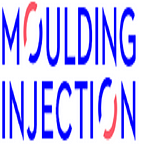3 D printing VS plastic moulding process — What is the best solution?
When it comes to manufacturing complex plastic components, 3D printing and plastic injection molding are often used. These technologies are advanced, competitive and well recognized in the world of plastic parts manufacturing. Cheap injection molding is also relatively quick and efficient, making it a popular choice for the mass production of plastic products.
If you are an OEM or a plastics supplier and are wondering whether to choose 3D printing or plastic injection molding, you’ve come to the right place. In this blog, we’ll show you the real difference between these two technologies.
What is the plastic injection molding process?
The plastic injection molding process is necessary to manufacture complex plastic parts at a high volume.
This process allows for the manufacture of plastic parts using materials such as thermoplastic or polycarbonate. The manufacturer feeds these materials into a molding machine where they are melted and heated. Once they move into the cavity where they will solidify, the part is ejected from the machine.
What is 3D printing?
The 3D printing process is used to produce plastic parts from a three-dimensional model. It is a very advanced, inexpensive and plastic technique to produce plastic parts quickly.
It is an incredible technique for developing an on-off prototype. If your budget and production are low, then 3D printing is the best option for you.
However, this technology is still in development and requires advanced features. But you can use this technology to produce small series.
Quick comparison between 3D printing and plastic injection molding
Efficiency: If you need a simple design based on 1 to 10 plastic parts, then 3D printing is an ideal option for you. If your production rate is high, like ten thousand pieces, then injection molding can do it.
Therefore, the efficiency of producing plastic parts by injection molding is relatively higher than 3D printing.
Practical: 3D printing is very practical. You can easily design parts from scratch with this tool. But high-volume prototype production would be easily possible with injection molding.
Tooling design: Tooling design is one of the most complicated and time-consuming parts of plastic injection molding. Here, 3D printing has seized the opportunity by creating a tool during prototyping that saves development time.
Cost: Compared to injection molding, the cost of 3D printing by product is low. When developing a product, you must design the prototype part itself, which is the last and fastest 3D printing process. Once you have designed a prototype, you can create identical products effortlessly. But in Belgium, plastic injection molding is the first step. Then you have to design an injection molding tool, which is an expensive process. Then you have to order an actual injection molding cycle.
3D printing is the best solution for…
- Small production units.
- Simple prototype designs.
- Designs with frequent changes.
- To make 10 prototypes, it takes at least a week.
Injection molding is best suited for…
- High volume production facilities.
- This technique usually takes 5 to 6 weeks to produce over 1000 plastic parts.
- Parts of any design and complexity.
Final choice:
Certainly, plastic injection mold design in Belgium is geared towards suppliers who need high volume plastic parts. If you think this approach is right for you, contact us now.
